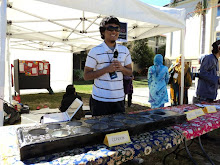The second part of measurement is to use standard unit measurement. Standard unit measurement refers to definite magnitude of a physical quantity defined by conventional law and used as a standard measurement by people.
We, people, engage with lot of standard unit measurement in our everyday life. For instance, using money at shopping mall, weighting our weight in the gymnasium, determining the volume of ingredient we put when we bake a cake and look for the distance between our current location and destination that we head to.
measurement is important in preparing the ingredient to bake a cake
Given all these situations, it is no doubt that children should be exposed to the concept of measurement in school.
Standard unit measurement encapsulate concept of mass, weight, time, distance, length, weight, height, volume, area, perimeter and money. Each concept has different measurement units and measurement materials.
For example, we use meter, centimeter and millimeter for length and perimeter. For time, there are seconds, minutes and hour or even further day, week, fortnight, month, year and decade. Gram, kilogram and milligrams are the units for mass.
today, almost every house own this to measure their weight
this is normally used by tailor to measure their customers' body parts
ruler, very commonly used by students in school
Teacher tip-tops:
1- To have an understanding, repetition is important but the challenge is to make the repetition not a boredom. Off course, students will find it redundant to measure the same thing in the classroom. Thus, teachers' creativity is needed to provide students with array of opportunity to practice. For example, getting students to work outside the classroom or with people around the school. For example, ask the students to get weight of 20 people or measure the area of many places around the school.
2- Again, teachers should not limit students' curiosity to explore on their own by giving too many rules and instruction. Task-based learning can be employed in giving the students opportunity to 'play' with the concept. The tasks should be made to be general so that students can think on their own. For example, teachers ask the students to come up with ten function of a ruler and show how they use it.





0 comments:
Post a Comment